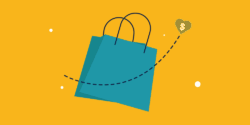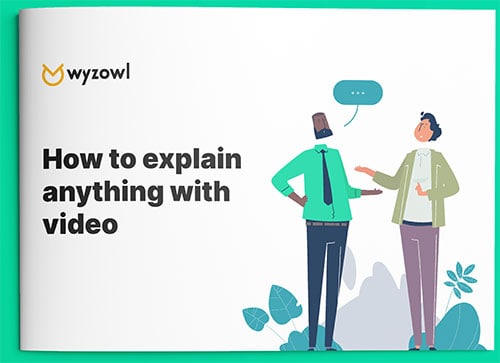Last updated on 10th January 2024
Whether you’re looking to buy a new car, a regular house cleaning service, or simply a new show to binge-watch on Netflix – chances are, social proof plays a key part in your decision-making process.
Chances are your decision-making process started well before you walked onto the car dealership lot; more likely, it started when you asked a friend for a recommendation, or when you started noticing what kinds of cars people in your neighbourhood drive, or when you looked at reviews online.
This phenomenon is called social proof, and whether you’re aware of it or not, it has a huge influence over how we make purchases. Let’s take a look how, and why…
What is social proof?
Social proof is the idea that people will make decisions based on what other people do. Let’s start with an example. Imagine you’re walking down the street trying to select a place to stop for ice cream, and you see two stores – one with no customers inside and the other with a line to the door. Psychologically, your decision-making process has already started. Why would you want to go to the ice cream shop no one is in? Isn’t there a reason everyone else has congregated at the other shop? Shouldn’t you trust the opinion of all those people and assume the crowded shop has a superior product?
This is how social proof works. The term “social proof” was originally coined in the 1984 book Influence, authored by psychology and marketing professor Robert Cialdini. Also known then as “informational social influence,” his concept described a social phenomenon where people mimicked the actions of others in a given situation. Social proof has also been more casually referred to as herd behaviour, public acceptance, or mass conformity. Whatever you call it, there’s no denying this concept has a powerful impact over how people shop.
Social proof’s power comes from four basic principles:
1. Uncertainty: Purchasing a product, even if it’s just a bowl of ice cream, is a risk. We’re handing over money in the hope that we will get satisfaction in return. We work to overcome this uncertainty by looking to see what other people around us have chosen. You might put this principle into practice if you ask what your friends are ordering at a restaurant before deciding for yourself.
2. Similarity: We’re wired to adopt the behaviour of people who are like us. This peer mentality is why wacky fashion trends (bucket hats and jorts, anyone?) can explode in popularity when one or two popular students are seen sporting a new style in school.
3. Expertise: We’re especially drawn to trust social proof when it comes from experts we trust. You might experience this when you look to your boss to see how to react in a certain setting at work, or when you research medical information from a doctor you follow on Instagram.
4. Number: We can easily assume that when the majority of people have made a decision, it’s a good decision for us as well. This principle can be seen in high-risk activities like stock market trading and more ordinary decisions like purchasing the hottest Christmas wish list item for your children.
Since the popularisation of the concept, social proof has been harnessed as a powerful business tool; now more than ever, marketers are eager to use this psychological tool to influence consumers’ purchasing decisions, increase sales, and win market share. And in this post, we’ll tell you ten ways to do just that.
10 Types of social proof
If you’re looking to to use social proof to enhance your sales and marketing strategy, you’re in luck. There are ten different kinds of social proof you can leverage, all of which we’ve outlined below. But don’t be overwhelmed by this list; you don’t need to execute all ten kinds of social proof on day one. Start by reviewing your options, selecting a few that you feel will best complement your sales strategy, and putting together a plan to implement them over the coming months. You might even have all the data you need sitting right on your computer already.
1. Testimonials
Social proof doesn’t get more straightforward than it does with testimonials. Testimonials are written or video endorsements from real customers who share their experience with a product or service and recommend it to other potential customers.
As you can imagine, testimonials can be very powerful. According to a Wyzowl survey, 2 out of 3 people say they’d be more likely to make a purchase after watching a testimonial video demonstrating how a business, product or service had helped another person like them.
After all, what’s a more compelling reason to purchase a product than hearing from a recent customer who was really pleased with their own purchase?
It’s important to note that not all testimonials are equal. Written testimonials are good, but video testimonials are even more compelling; they humanise the person sharing their experience, appeal to today’s video-obsessed consumer, and show the emotion and intention behind someone’s words. Here’s one of our favourites from project management software company Mavenlink.
If you’re interested in getting video testimonials from your customers we can help you! We offer video testimonials as a service, and handle everything from planning to recording & production. Check out our video testimonials page for more information.
2. Customer ratings and reviews
When is the last time you purchased something without reading a review first? If it’s been a while, you’re in good company; 91% of people regularly or occasionally read reviews before making a purchase, and 95% of people say that reviews – whether positive, or negative – influence their purchasing decisions. What does that mean for your business? If you don’t have great ratings and reviews, you’re likely going to lose business to a competitor that does.
If you’re interested in improving your ratings and reviews online, you can start by looking at the platforms you’re already on. If you’re selling products on Amazon, for example, they offer a robust reviews feature set. Your customers can rate your products, leave written reviews, and also upload pictures of your products, creating an experience that gets as close to being in a store as a website can get.
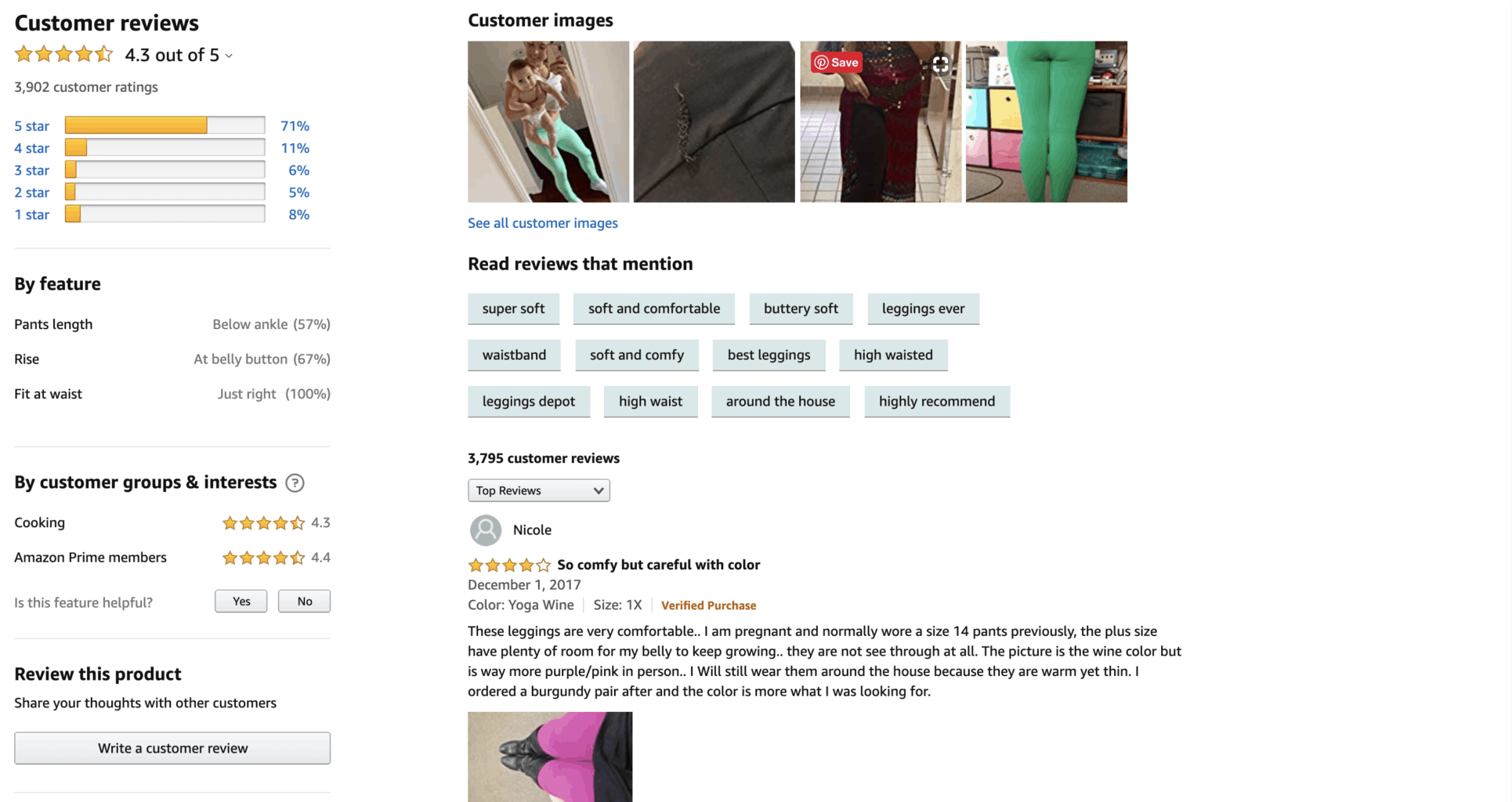
But Amazon isn’t the only place to host your ratings and reviews. Consider encouraging customers to leave reviews on Facebook, Google, Trustpilot, and even your own website to publicise your social proof. Airbnb is a great example of a company that has beautifully incorporated ratings and reviews into their own platform to improve the customer experience.
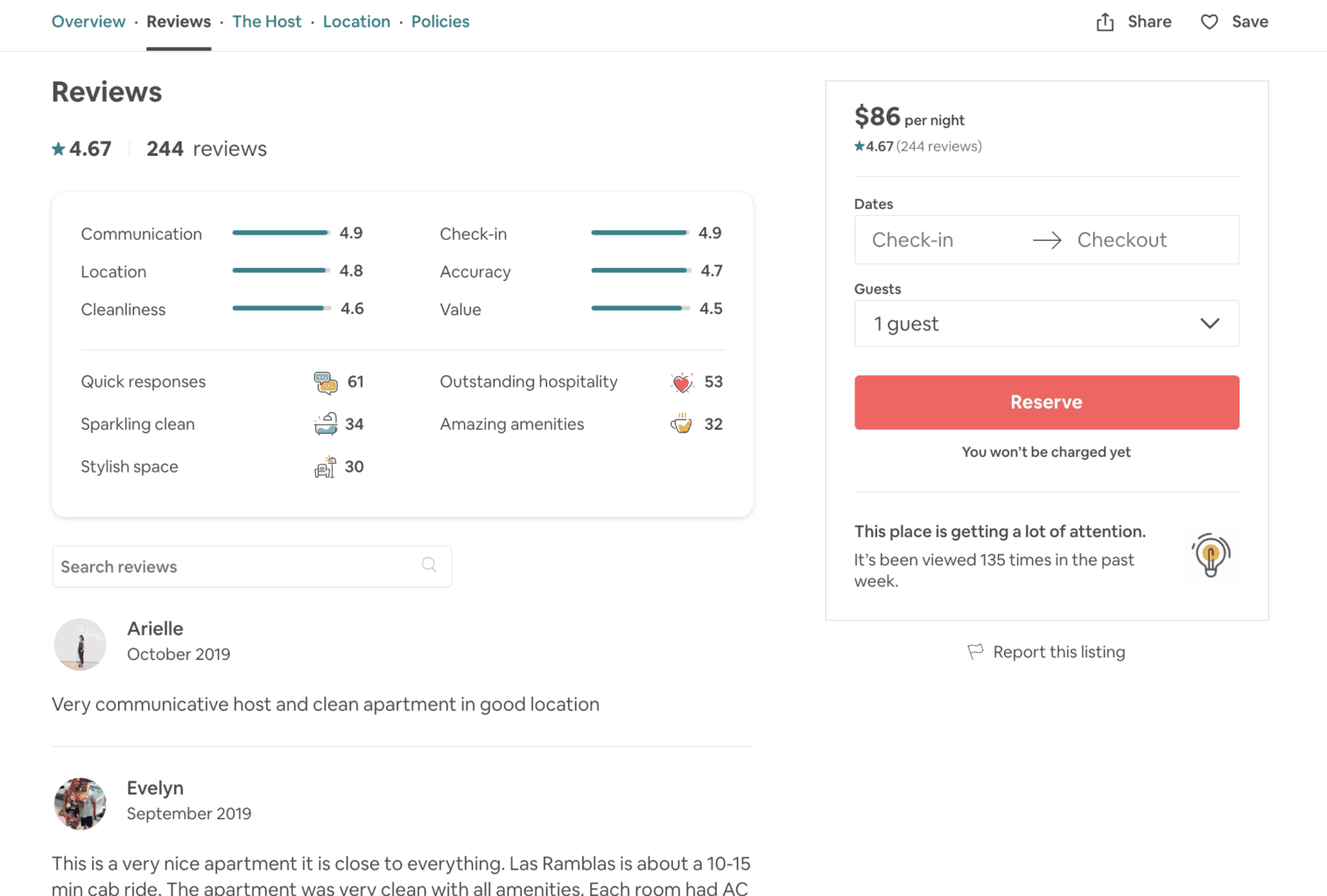
In addition to improving your sales process, these kinds of reviews can also be helpful for your product development team; you might consider taking a look at your reviews on a regular basis to see if there are common themes about potential enhancements or current defects that you could change to improve your product.
3. Numbers
Not all social proof has to come from the mouths of customers; you likely already have great social proof arsenal at your disposal in the form of sales data. Consider promoting some statistics about your product or service like the samples below:
- -Total number of subscribers
- -Total sales made
- -Total orders shipped
- -Number of tickets sold
- -Number of tickets remaining
- -Number of satisfied customers
- -Number of returns (if notably low)
Consider promoting these numbers in sales collateral, on your website, in email campaigns, on digital ads, and in social media posts to increase consumer confidence and boost sales. Check out how Shopify uses social proof on their homepage by promoting the 1,000,000 businesses around the world who use their platform. Who wouldn’t trust a product that 1,000,000 people already use?
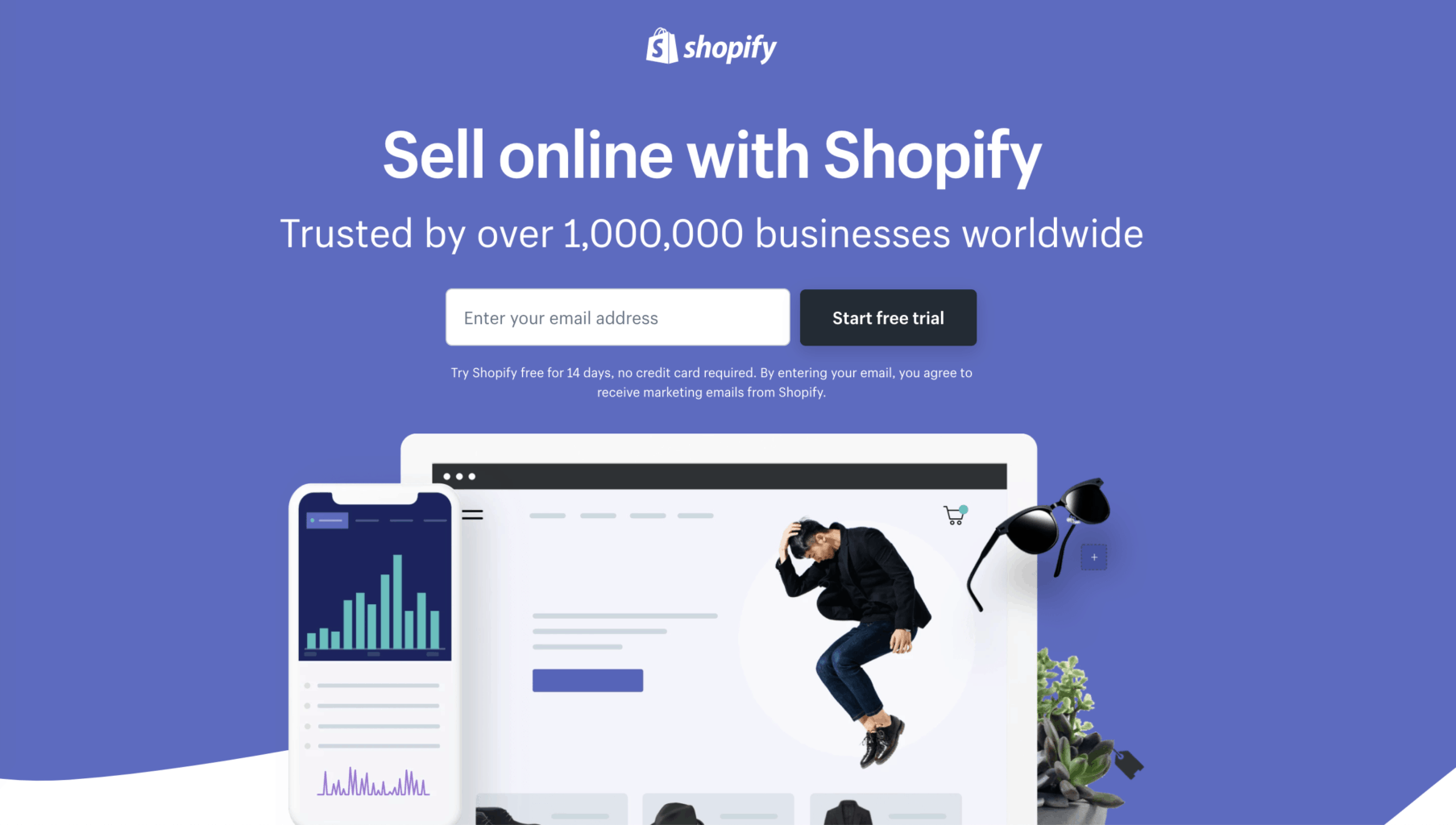
4. Endorsements
When most people hear the term endorsement, dollar signs start flashing in their mind. But endorsements don’t have to be expensive; in fact, they can even be free.
The most popular kind of endorsement is a celebrity endorsement that you might see on a television commercial as Shakira sips on a Pepsi or Michael Jordan runs around the court in a fresh pair of Nike sneakers. But more common now are niche endorsements from micro-influencers or experts on social media. For example, imagine that you run a chain of local hair salons. Would it make more sense for you to pay Jennifer Aniston for an endorsement, or for you to find a local YouTube-famous hair stylist and vlogger to promote your company?
Unless you’ve got a million dollars laying around that you don’t know what to do with, the second option will give you the most bang for your buck. Plus, research by Google shows that influencers are just as likely as celebrities to drive buying decisions. Why? These kinds of endorsements are much more relatable than celebrity endorsements; most influencers have wildly loyal followings and fans who watch their content daily and trust their recommendations implicitly.
For a great influencer endorsement example, check out this Instagram post from beauty and style blogger Julia Berolzheimer. This influencer has 1.3 million followers, and her post promoting AERIN perfume earned more than 20k likes for the company.
5. Case studies
Case studies are a tried and true way to earn customer confidence. Case studies are in-depth accounts of real customer experiences that explain how a product or service helped a customer solve a problem. This type of social proof is extremely common in the B2B space, and even more specifically in the B2B services space in industries like software, development, and hosting.
Amazon Web Services shows the power of case studies on their website. This entire section of their site is dedicated to case studies from some of their biggest customers like Siemens, Expedia, Intuit, and Royal Dutch Shell. Each case study features a video of their client explaining how AWS has empowered them to achieve their business goals, along with accompanying case study text. We love how this sample couples two social proof types to create one powerful online experience.
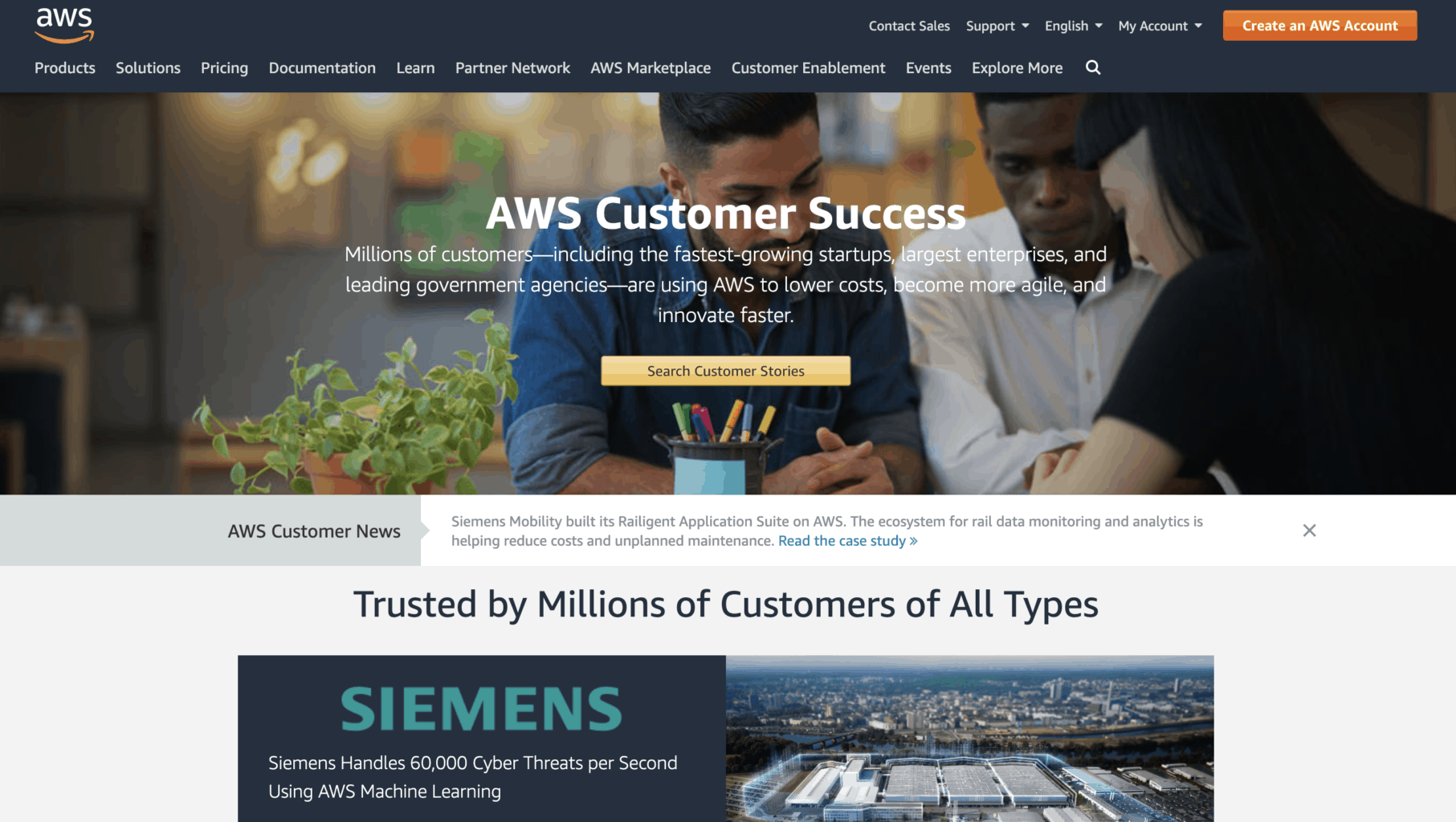
6. “Featured in” section on your website
Adding a “featured in” section to your website is a great way to leverage the brand power of other media outlets to create validity for your own brand. If a major news outlet or popular website has written a story about you or featured your product on their website, you could be monetising that publicity.
Razor company Billie takes an innovative approach to this concept on their website by combining customer endorsements with clips from their press in Nylon, Fast Company, Buzzfeed, and other notable publishers. While a more traditional approach to this page might simply look like a collection of logos, this company shows how you can stretch the limits of a “featured in” section to add more delight to the customer experience – and more visual interest to a website.
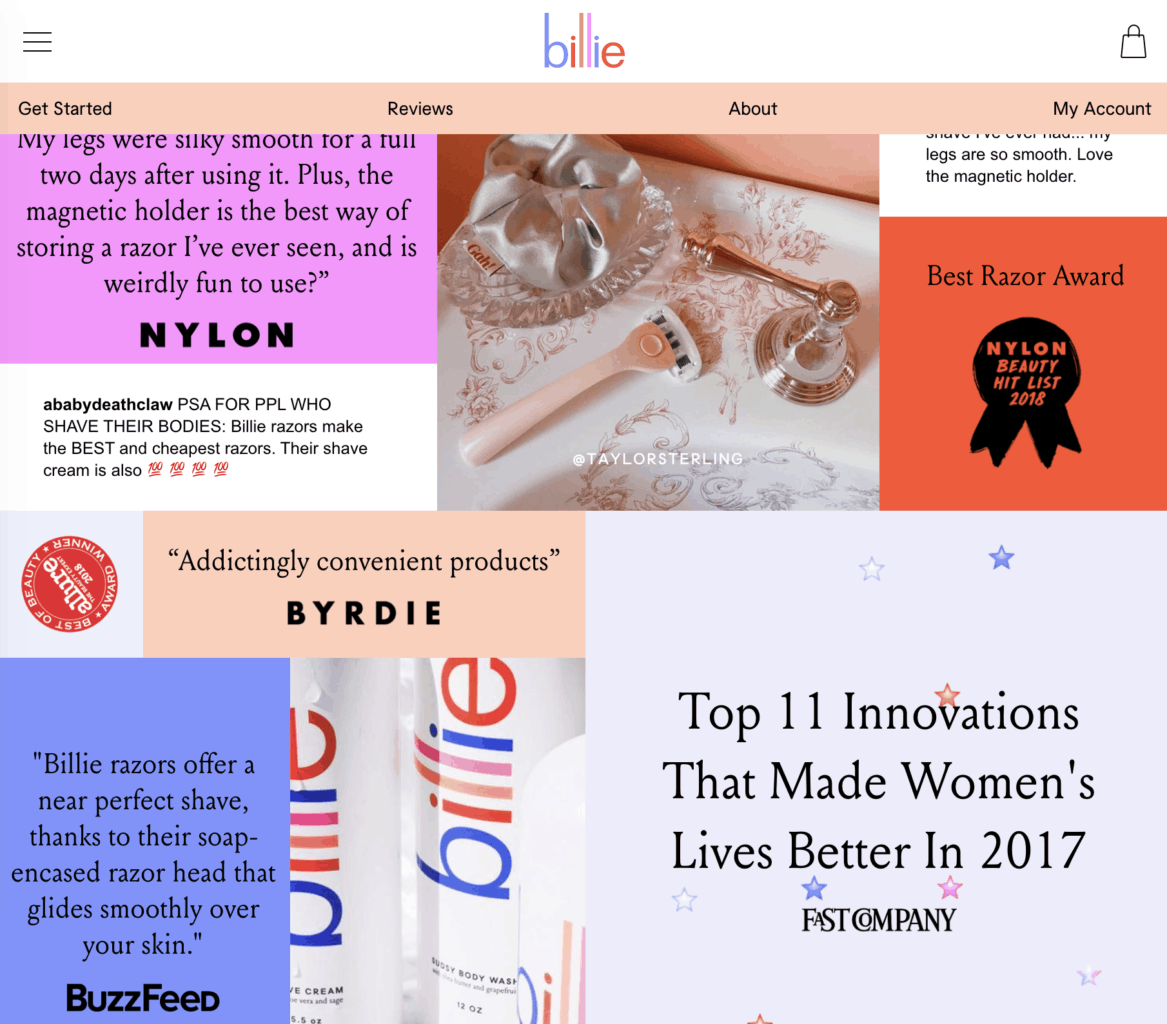
7. Social shares
As the name suggests, social media is the perfect place to create social proof. In its simplest form, social media can be a way to reach your existing brand loyalists. But if done well, you can use social media sharing to reach entirely new audiences without paying for advertising.
For example, take a look at this Oreo Facebook post promoting a holiday recipe featuring the infamous sweet treat. Just this one post earned the brand more than 3,300 shares. That means that the post organically appeared in thousands of people’s feeds without their needing to pay for advertising. Talk about serious social proof ROI.
You can also increase social sharing by including social sharing links directly in your content. Check out how database company Fauna does this in their blog. Each post is accompanied by LinkedIn and Twitter share buttons on the left, and when selected, they link directly to each platform where readers can share that content with their followers. This is a simple way to make your blog content work much harder for you.
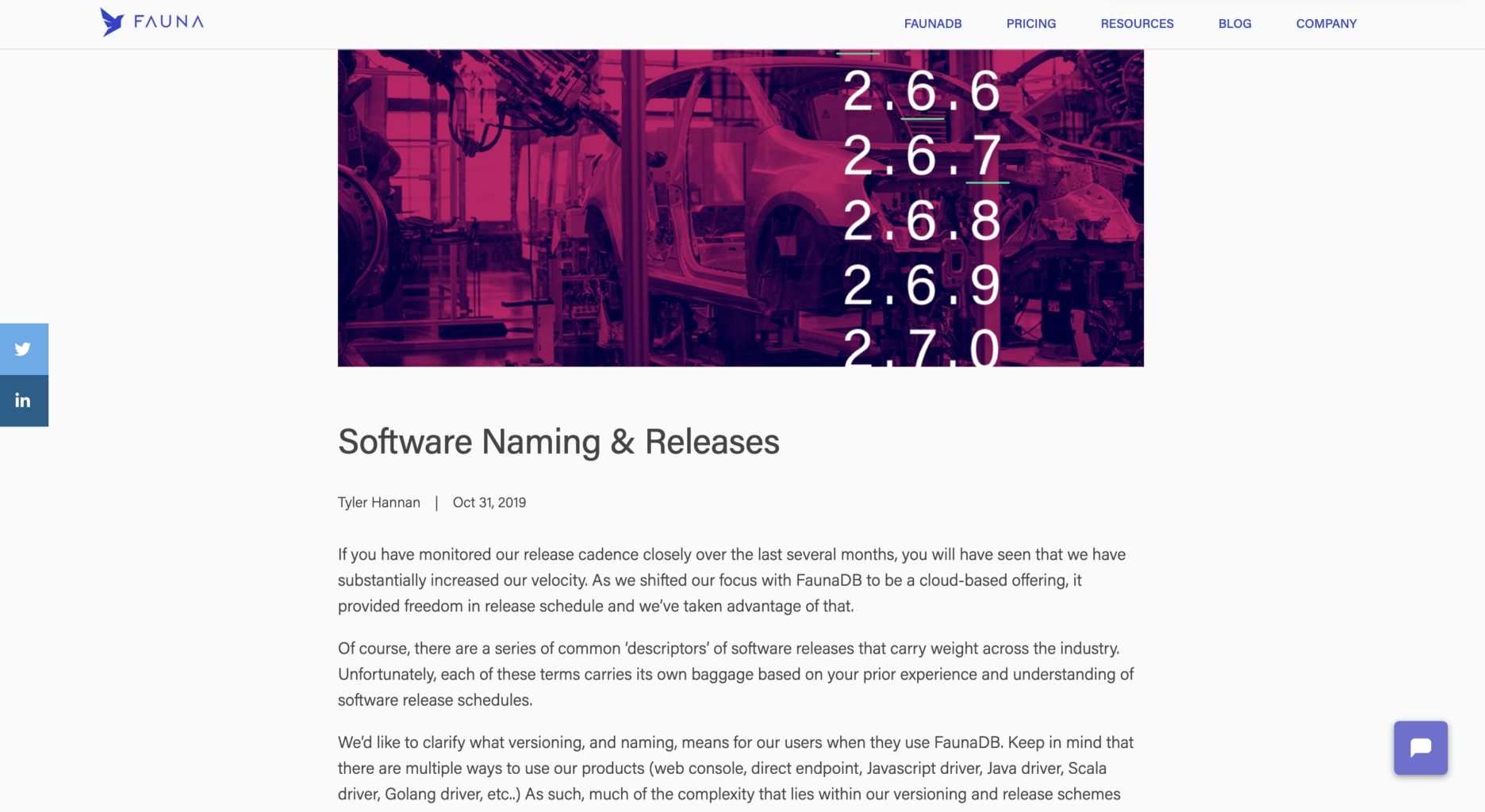

8. Customers’ logos
Building confidence with your potential customers doesn’t have to be complicated. Sometimes it’s as simple as showing your website visitors who you currently work with or have worked with in the past. This kind of social proof is super easy to implement and can deliver incredible ROI; one study found that simply placing logos of your business customers on your website can increase your conversions by as much as 400%. With numbers like that, adding logos to your site should be a no-brainer.
Check out how startup lab Business Instincts Group features their clients on their website, and notice how they’re amplifying this section’s impact by also including social proof type #6 (a “featured in” section) to double their credibility.
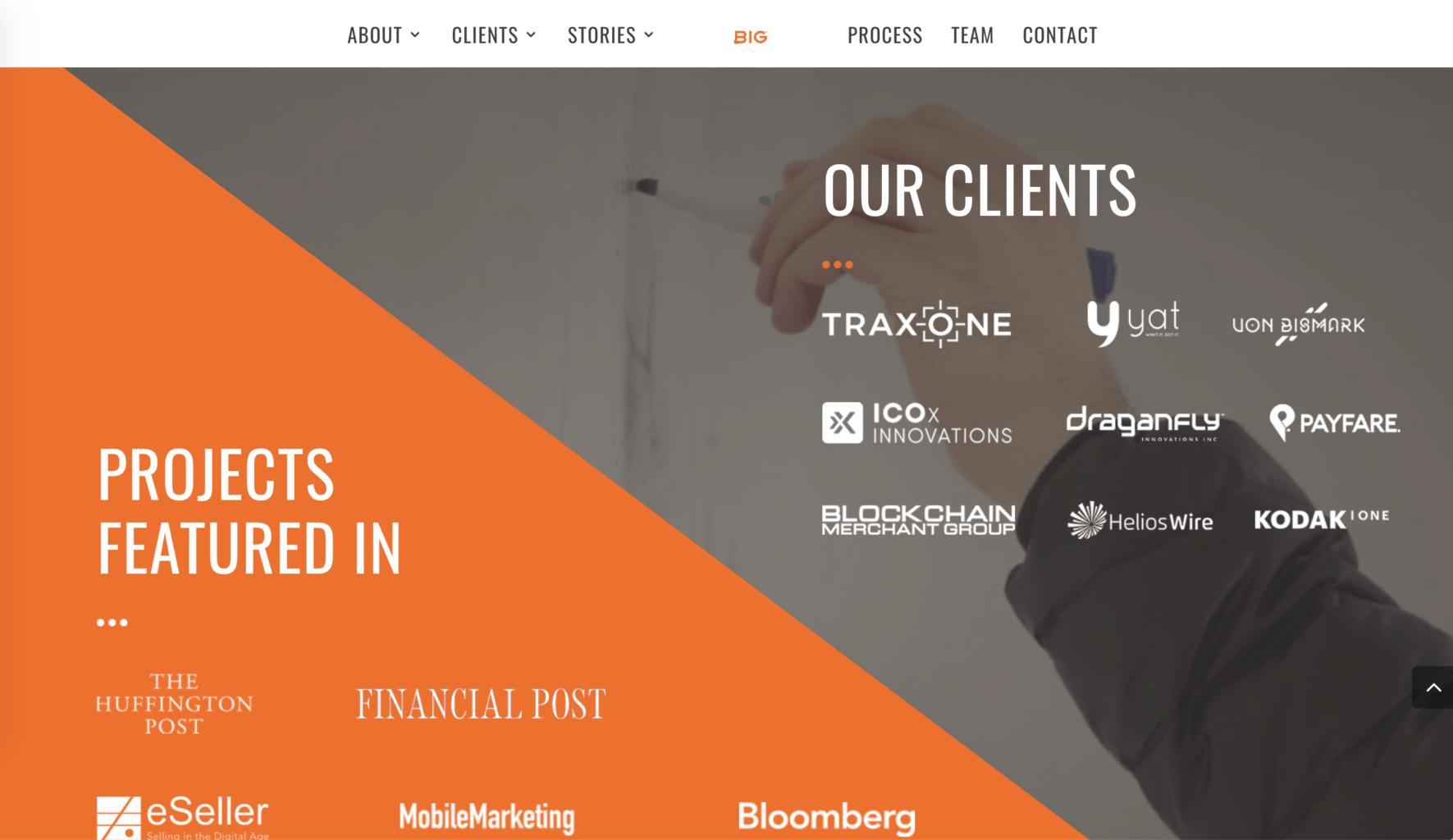
9. Awards
Who doesn’t want to buy award-winning products and services? Showing off your recognitions on your digital outlets is a great way to build trust via social proof. Whether you’re displaying your awards on your website or promoting them via email or social media, this is a great way to squeeze the most out of your award-winning work.
One company that does this gracefully is the web development firm Adchitects. They feature their awards right on their homepage so new visitors are immediately greeted with some credibility-building content.
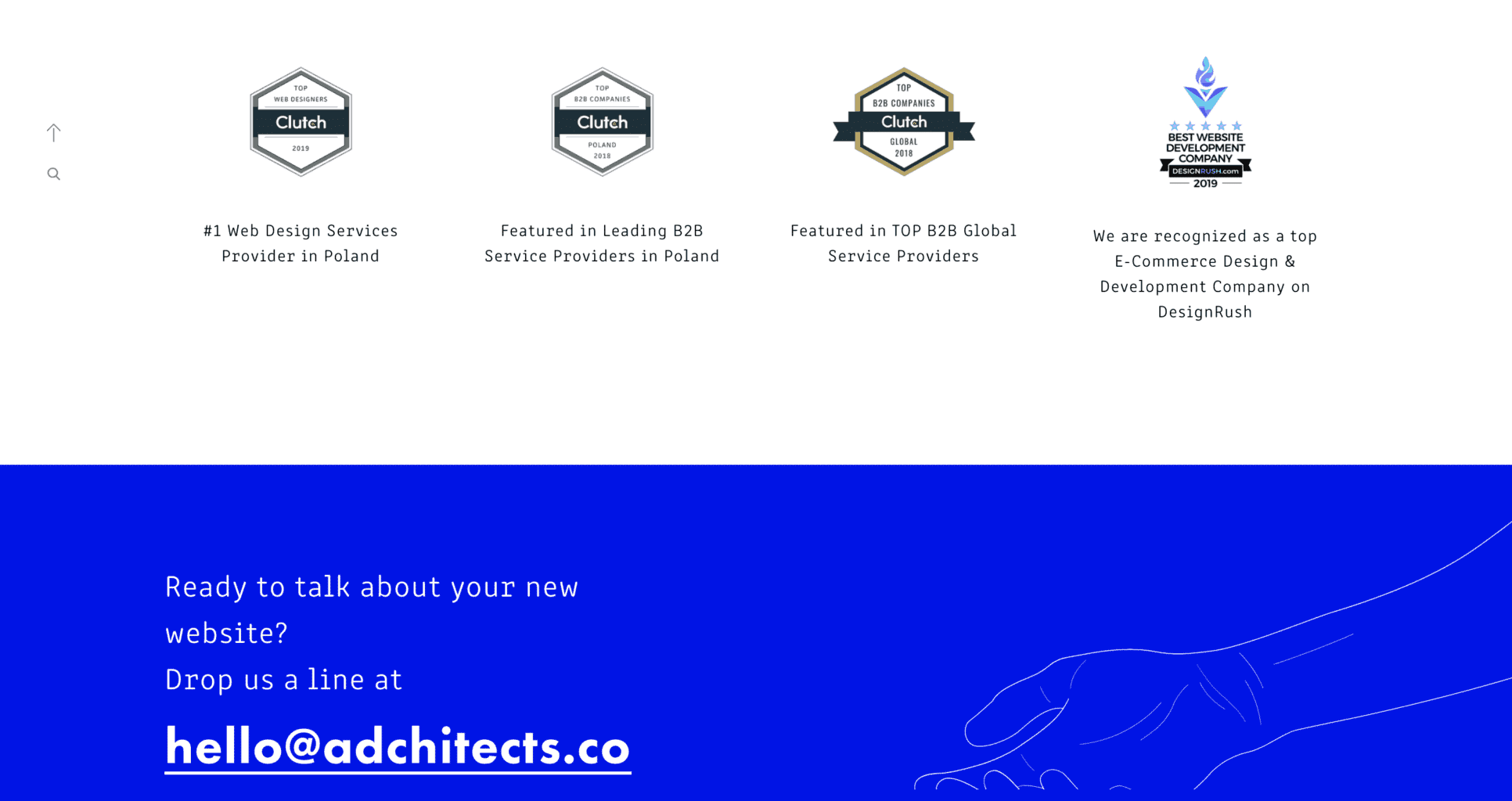
Meanwhile, creative firm Animal puts one of their awards front-and-centre as a continual banner on the top-left corner of their website.

Alternatively, if you’ve got a lot to show off, you could have an entire page dedicated to your awards on your website. The strategy you choose will depend on the industry you’re in, but the outcome will be the same: more trust with your target audience.
10. Certifications
Certifications can be a great way to show that a third party has recognised you and your work and deemed it worthy of some form of credentials. Certifications can come in all kinds of packaging; if you’re a project management firm, having certified PMPs on your staff would help boost trust. If you work in construction, safety certifications might give customers confidence in your services. But there are other kinds of certifications that are more public facing that you may want to look into as well.
One kind of certification you can work toward is a social media certification. This is an icon that’s given to accounts that have been verified to be the brand or celebrity they claim to be. Check out the little blue checkmark icon on Target’s Twitter and Instagram accounts for examples. Both Instagram and Twitter make it easy to request a verification, but each platform has different criteria for giving out these coveted status symbols.
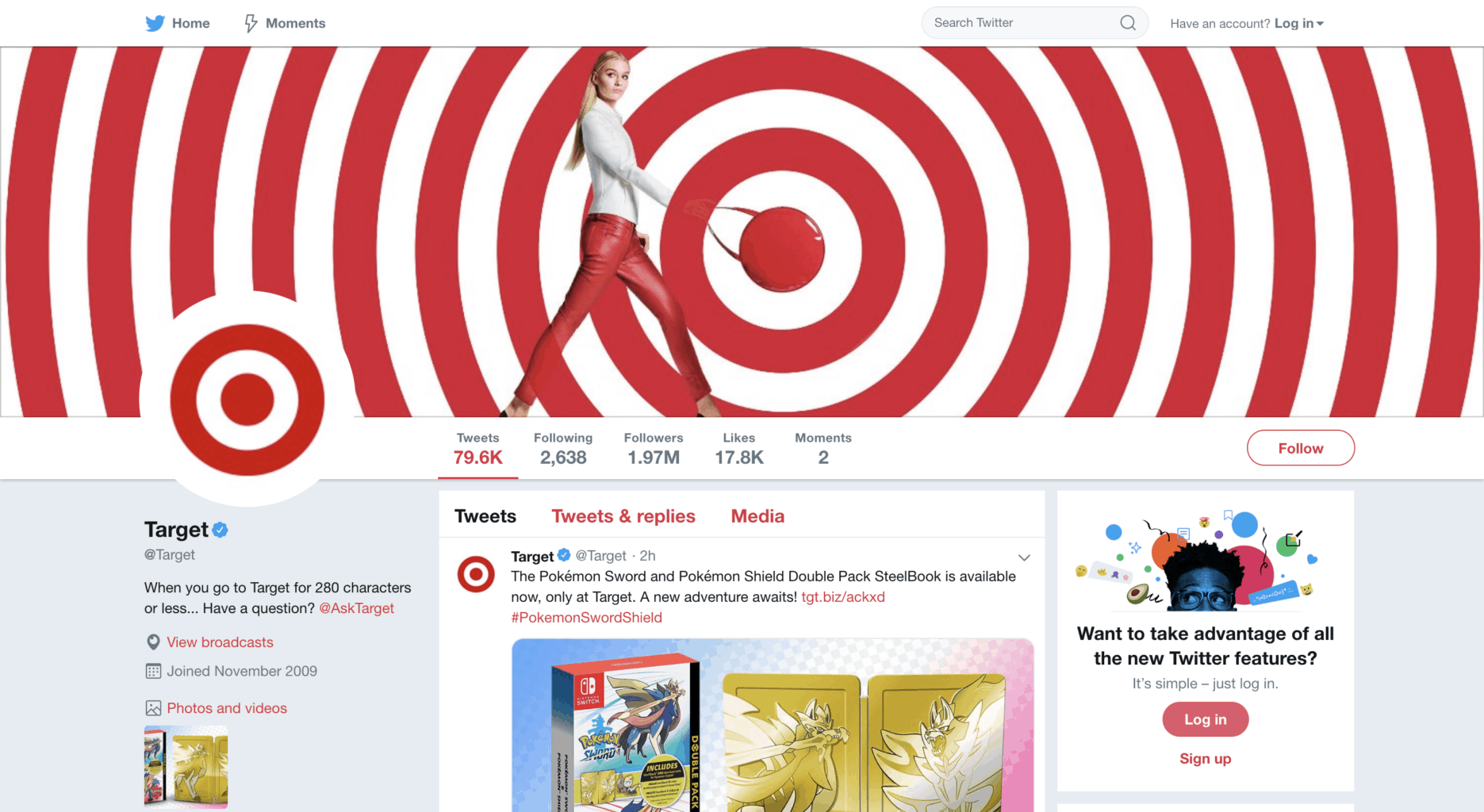
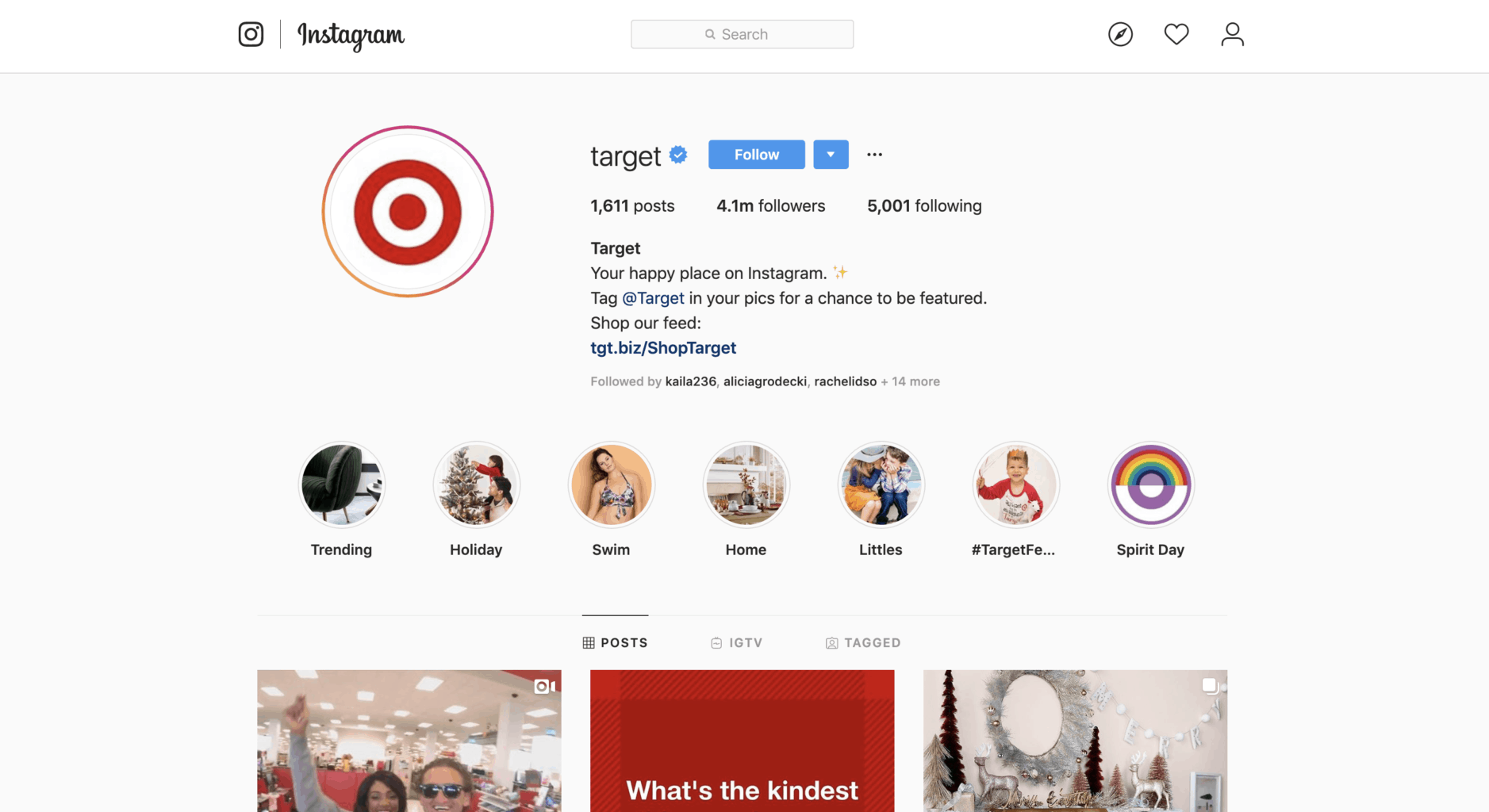
Why social proof is an essential marketing ingredient
Now that we’ve reviewed ten of the most common (and effective) kinds of social proof, let’s review why it matters in the first place. Here are six proven reasons why social proof can enhance your marketing strategy.
Social proof inspires trust: 91% of millennials trust reviews just as much as they trust a recommendation from family members and friends.
Social proof establishes credibility and builds your reputation: Remember the Shopify example we used earlier? Who wouldn’t trust a company that already has more than 1,000,000 customers?
Customers care about reviews: Shoppers have opinions, but especially when it comes to reviews. 83% of users think reviews that are 3 months old or older aren’t relevant anymore; 82% of users intentionally seek out negative reviews; and 83% of people trust reviews over advertising. Chances are if you don’t have reviews available, many customers won’t even consider purchasing your product.
Social proof gives you an edge: If a customer is considering you and a competitor, and that competitor doesn’t have reviews, recommendations, or other kinds of social proof available online, it makes their purchasing decision a lot easier. Simply having social proof online can give you a competitive edge in the market.
Social proof shows off your skills: Qualitative social proof, like testimonials and case studies, can highlight your expertise, show off unique features, and put your product quality in the spotlight.
Social proof can increase site traffic: 50% of consumers report that the first thing they do after reading a positive review about a brand is to visit their website. That means social proof can even be a lead generation tool for your sales team.
Wrapping up
Now that you understand the ten different ways to use social proof for your business, your mind is probably spinning with ideas about how you can use this marketing tool to boost your business goals in 2020. But before you set off to put into practice what you learned in this post, consider a few tips to get you started:
Be selective: Don’t set out to implement all ten types of social proof in the next month. Instead, select 2-4 kinds that make the most sense for your business, and put together a plan to implement them over the next 3-6 months. This approach is much more sustainable and will ensure you’re putting resources where they matter the most.
Promote your proof: Once you have your social proof created, don’t keep it to yourself – share it with the world! Create a campaign to publicise your social proof via your existing marketing channels like your website, email, social media profiles, ad campaigns, and more to ensure your potential customers see this new and compelling content.
Explore other trust-building tactics: If you’re looking for more ways to build confidence with your potential customers, check out our post on “11 Ways to Gain Customer Trust and Boost Sales.” It’s packed with more tips and tricks to grow your credibility, and in turn grow your revenue.





